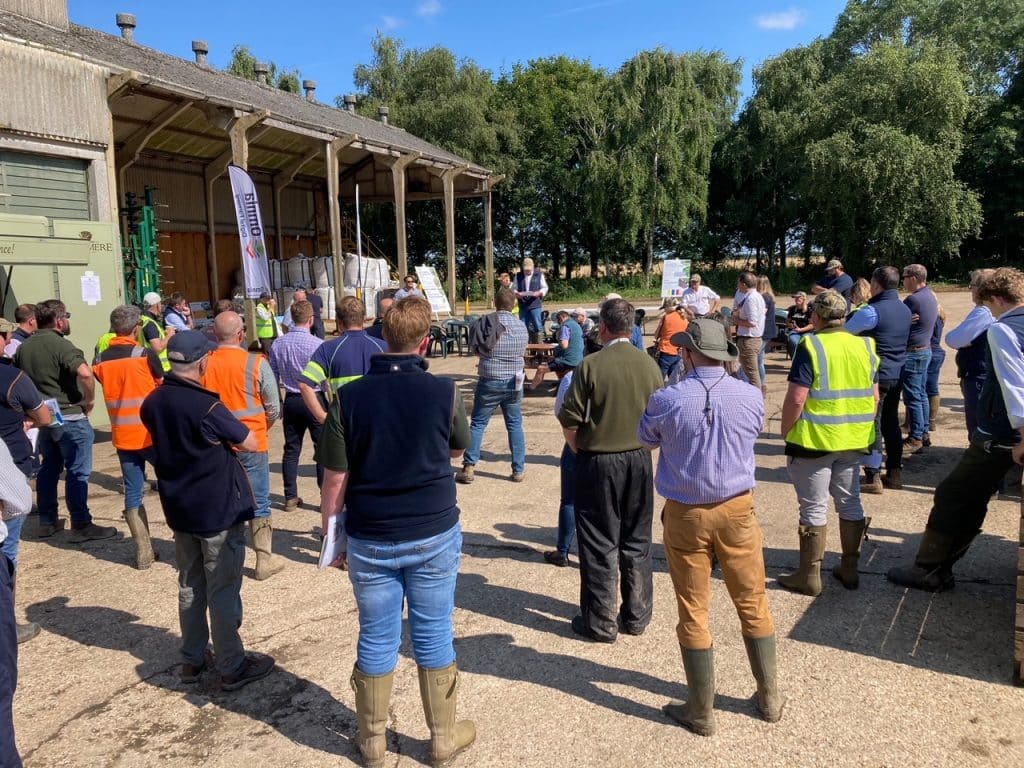Hutchinsons Potato Day 2024: Experts showcase innovative solutions amidst UK growers’ challenges – Potato News Today
This year’s Hutchinsons Potato Demonstration Day, held at Worth Farms, Holbeach, Lincolnshire, focussed on potential solutions to address some of the key challenges faced by UK potato growers ...
Ongoing research into wireworm, PCN management, crop safety of post emergence herbicides, nutrition trials, plus updates about root lesion nematodes were some of the topics covered on the well-attended day.
Due to heavy rainfall it was not possible to visit the demonstration plots in the field and the talks took place in one of the yards belonging to Worth Farms.
Highlights of some of the key field trials
Hutchinsons root crop technical manager Darryl Shailes highlighted some of the key field trials being carried out by the company to assess the impact of different strategies on wireworm populations in a crop of Maris Piper.
These include a pyrethroid granule which has approval in the pipeline and a calcium-cyanamide based fertiliser.
“At the moment we are focused on the theoretical effects of these products,” said Darryl, noting that the fertiliser has had some effect in onions.
Some cover crop species help reduce wireworm populations, and the Hutchinsons team is measuring the effects of two different types of buckwheat, a high glucosinolate mustard and a lower glucosinolate standard mustard, and a multi-variety cover crop for soil health, revealed Darryl.
He also presented the additional work exploring the potential benefits from growing DeCyst-Prickly (Solanum sisymbriifolium) and DeCyst Broadleaf (Solanum scabrum), which can be used as catch crops for PCN as well as cover crops.
Darryl said: “We will be comparing the final populations with those initially present (pf/pi) so growers can make informed strategies on how to reduce PCN infestation.”
Importance of developing strategies that are not dependent on pesticide approvals
Simon Faulkner of SDF Agriculture pointed out the importance of developing strategies that are not dependent on pesticide approvals.
“Concerns over pesticide approvals highlights the importance of knowing which varieties can offer resistance and/or tolerance,” he said. “Growers must manage their land to ensure that PCN levels are manageable without over-relying on pesticides.”
PCN varietal resistance trials, which started last year are continuing, and are assessing a mix of older and newer varieties.
“We are seeing some additional crisping, packing and chipping varieties which have both tolerance and resistance, which will be important traits going forward.”
Reducing soil populations of root lesion nematode (RLN)
French marigold (Tagetes patula) and certain varieties of oil radish cover crops can be effective at reducing soil populations of root lesion nematode (RLN) Pratylenchus spp., revealed PhD student Vongai Chekanai of Harper Adams.
The main crops susceptible to RLN include potatoes, onions, carrots, daffodils and other narcissi. In potatoes, Pratylenchus is associated with potato early dying disease and poor emergence.
Vongai said: “Cover crops can be non-hosts, trap crops, or biofumigants to nematodes. On the other hand, other species used as cover crops can be good hosts which support nematode multiplication.
“Our trials indicated that some varieties of oil radish and French marigolds were poor hosts and suppressed RLN population numbers, however, Indian Mustard, which is popular as a biofumigant to suppress potato cyst nematodes (PCN), increased Pratylenchus spp.”
Michael Rodger of Richard Austin Agriculture updated delegates on the herbicide crop safety trials being held on 26 varieties, including some new, coded varieties provided by the breeders.
While last year’s trials were focused on metribuzin, hotter herbicide mixes have been used this year. Observations will be made weekly for the next four weeks, and the plots will be taken through to yield.
Healthy soils and potatoes
Another area which generated interesting discussions between staff and growers concerned agroecological strategies, and their benefits and potential pitfalls when not correctly undertaken.
Ed Brown, head of agroecology services at Hutchinsons, emphasised that healthy soils are key to healthy crops, and such strategies can deliver real benefits for potato crops when done appropriately.
He encouraged the visitors to explore the principles and keep an open mind.
Strategies include minimising soil disturbance, maintaining living roots in the soil throughout the year, maximising diversity, and, where possible, integrating livestock into the rotation.
“These activities will help develop truly healthy soil, thereby growing truly healthy plants which will rely on less intervention but provide better yields and better quality.”
He drew attention as to possible reasons for why PCN may be proliferating, such as too short rotations and lack of predators for those nematodes in the soil food web.
“We need to ensure that the soil food web is balanced, so individual species never get a chance to take hold.”
Ian Robertson of Sustainable Soil Management head of soil services at Hutchinsons emphasised that nutrient soil indexes do not imply functionality or availability to the plant.
He explained some of the interactions of the Soil Food Web, which go from photosynthesisers, at the top level, through decomposers, pathogens and root feeders, and predators at different levels.
“Connectivity between the different levels of organisms is key, and as soon as you move soil you lose this, which allows some pests to proliferate above others.”
Nutrition use efficiency (NUE) trials
The nutrition use efficiency (NUE) trials drew a great deal of interest from the visitors, and Rob Jewers, crop nutrition specialist at Hutchinsons, pointed out products such as foliar biofertilizers have the potential to allow growers to choose their product according to conditions each season. Utrisha N, Vixeran and R-leaf are being evaluated by the Hutchinsons team to build understanding of how to get the most from them.
Rob said: “Given the rise in input prices, environmental concerns and the need to improve soil health, tailored nutrition programmes containing these biofertilizers are an important way forward.”
